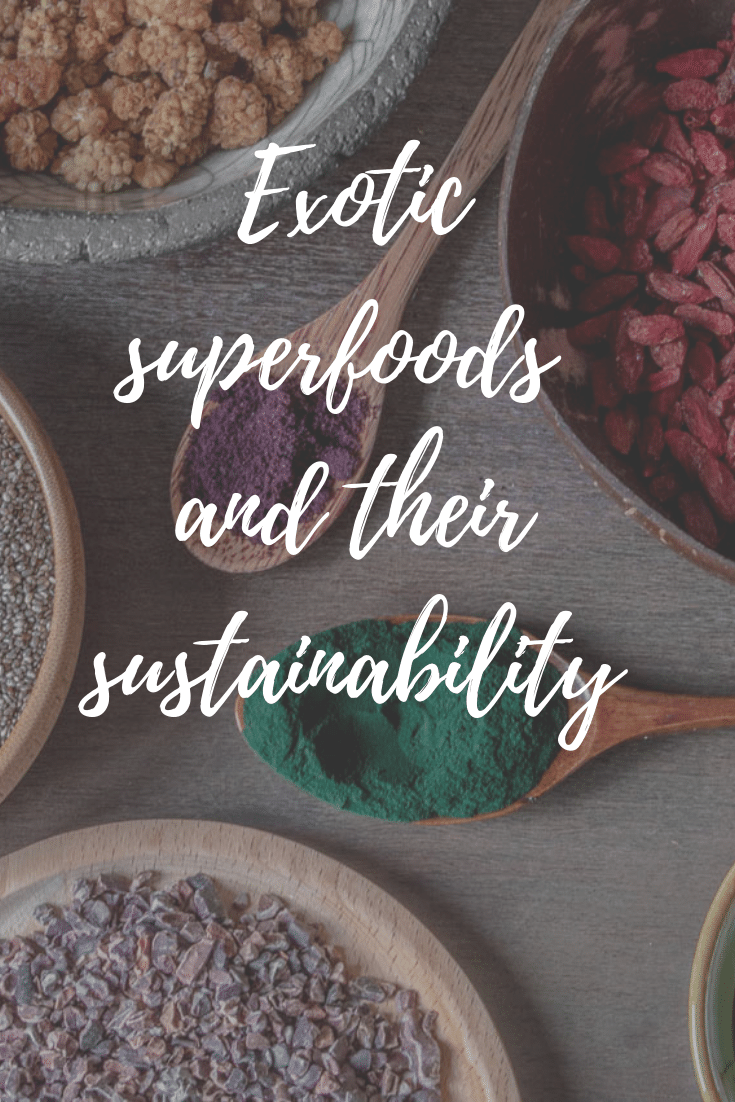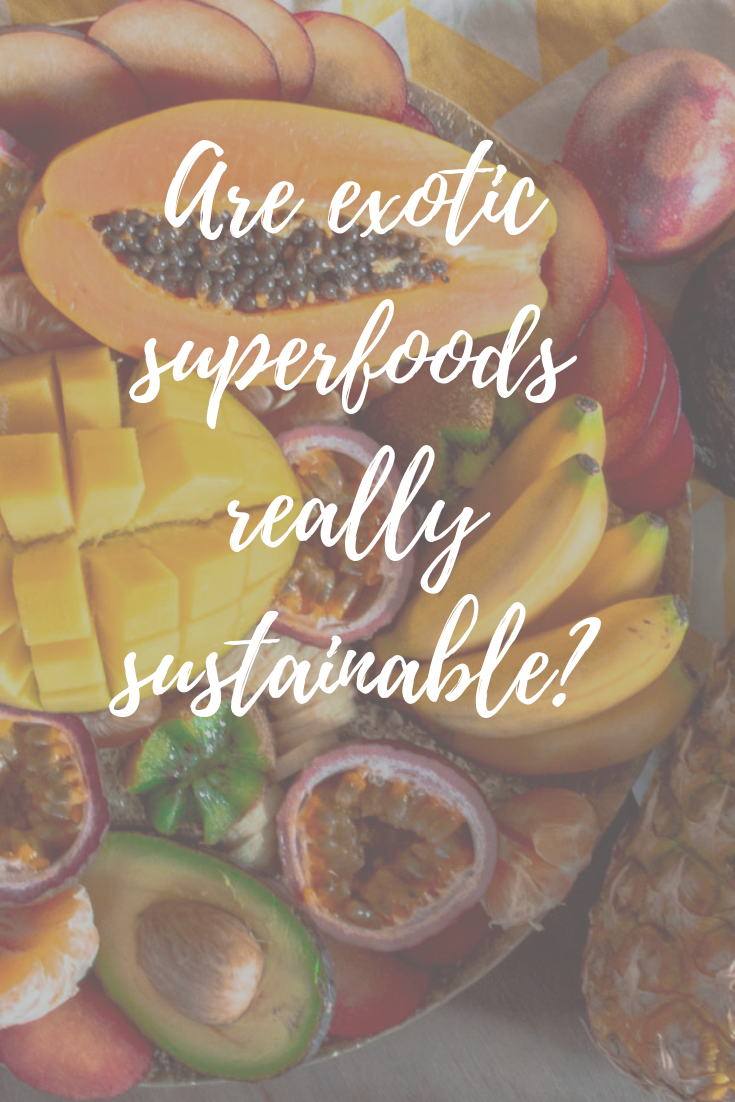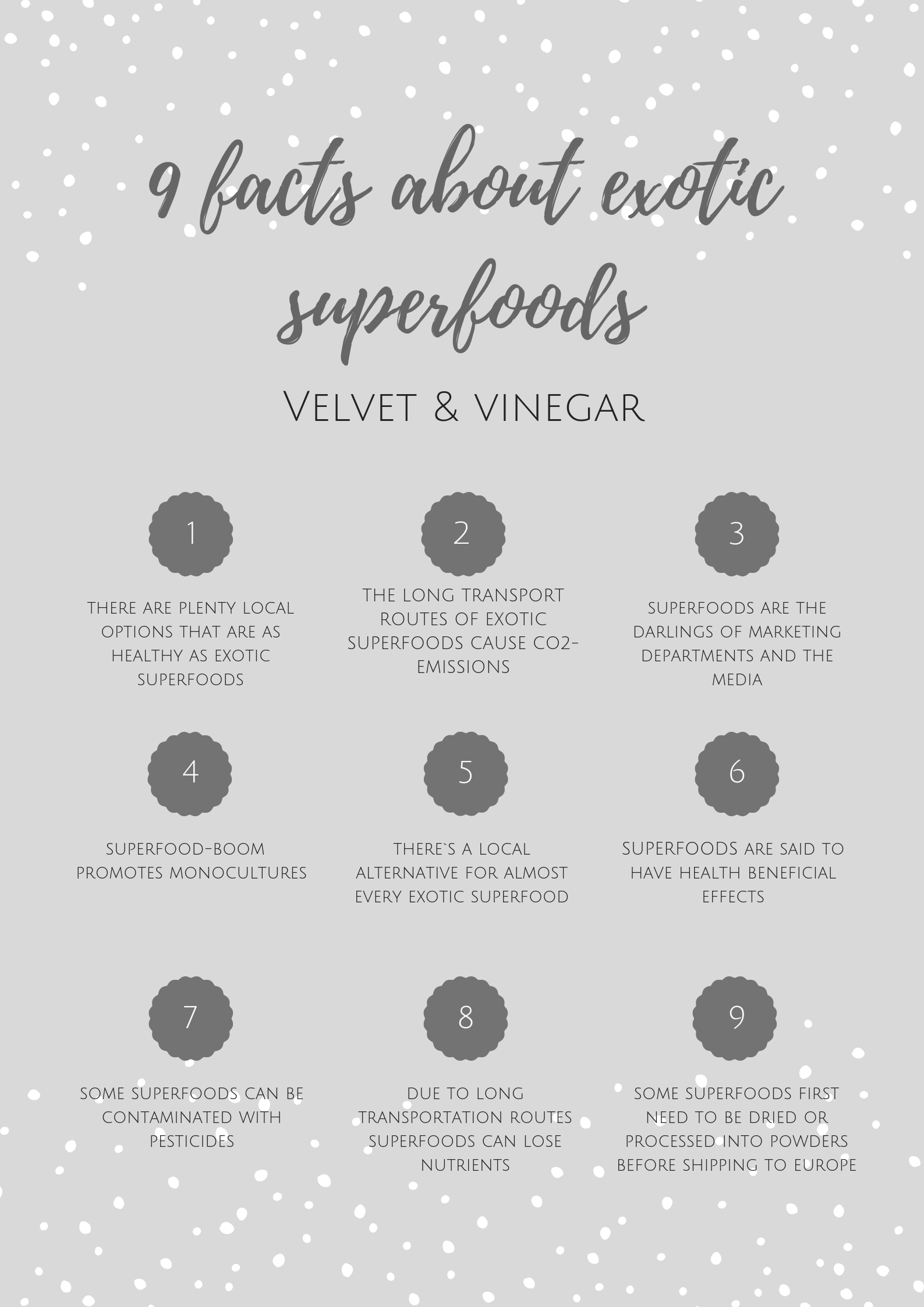This post is also available in:
![]() Deutsch
Deutsch
This blog post also is available in German.
It`s early in the morning and you`re sitting in the bus on your way to work, reading the daily newspaper. An article about superfoods attracts your attention. It praises the wonderful effect of açai, goji berries, avocado and co. on your health. The media are real professionals in subjectively influencing our subconscious. So on your way home you make a little detour to the nearest health food store to buy some of these superfoods.
After all, there’s nothing bad about wanting to do something for your health, right? In principle, no. But you should be cautious about hypes such as these so-called superfoods in the media. Why so? And what about superfoods and their sustainability? I’ll tell you all about it in this blog post.
What is a Superfood?
If we’re already talking about superfoods, it makes sense to define the term briefly.
A superfood is a food that is said to have a health-beneficial effect. The term is strongly influenced by marketing. Therefore it should be treated with caution.
The positive effects of certain superfoods have partly been scientifically proven. However, some of these results have been obtained at very high doses, in animal experiments or under laboratory conditions. Whether these results can be exposed one-to-one to the human organism and in particular to dietary intake is questionable.
What is behind the Superfood trend?
The majority of hyped superfoods have one thing in common: they are exotic. Be it chia seeds from Mexico, avocados from the Dominican Republic, matcha from Japan, açai from Brazil or quinoa from Bolivia. All of them have flown halfway around the world to land on our plates.
That makes them one thing above all else; attractive. Mankind has always been fascinated by the unknown, the exotic, things they don’t know. So it`s not surprising that such products arouse our interest. And for this very reason, superfoods are a great source of food for the marketing department of food producers. The result is a superfood trend that is being pushed even further by the media.
At this point I need to mention that there is no added value between flown in superfoods and local alternatives. And superfoods under no circumstances replace a balanced rich diet based on whole foods.
At this point, you might be asking yourself – which, by the way, is quite justified – where do I get my knowledge from? I`m a pharmacist by profession with a 5-year academic education. Nutrition is part of this education. Therefore I have the skills in this field and know what I`m talking about. I will also start a new training in this area in October. But more of that when the time comes. Further I investigate for each blog post.
Are superfoods really healthier than local alternatives?
No. There are also local foods with an excellent nutrient balance. They were not transported halfway around the globe. Thus, when freshly consumed, they even contain higher nutrient concentrations than their exotic counterparts. Examples include raspberries, blueberries or green vegetables such as broccoli or kale.
Many local fruits and vegetables are therefore superfoods already. Even if we often aren`t aware of it.
What about superfoods and their sustainability?
Now I’ll tell you what it looks like with exotic superfoods and their sustainability.
Long transport routes
Probably the most obvious point. Exotic superfoods often travel long distances. Not an optimal CO2 footprint compared to local alternatives. However, certain exotic species have also found their way into Europe. Farmers grow quinoa in Switzerland as well by now. Always pay attention to the origin when buying superfoods. Superfoods may also lose nutrients due to long transport routes. The effective nutrient concentration is therefore lower than at the point of origin.
The hype promotes monocultures
The superfood hype leads to an increased demand, which favours the emergence of monocultures. Monocultures partially leach out soil. A soil imbalance develops. As a result, the farmer uses more fertiliser to work against this imbalance. This in return can have harmful effects on groundwater and the insect and animal species that live there.
Monocultures are more susceptible to pests. So farmers need to use more pesticides. Their effects on our health and wildlife are questionable. Monocultures also promote the extinction of bees and small wildlife, like insects. The latter are unable to find food in the one-sided soil conditions. Monocultures also promote deforestation.
If exotic superfood, then please at least pay attention to an organic seal and sustainable cultivation.
bad individual ecobalance
The sustainability of certain superfoods is per se poor. Take the avocado. Their production consumes large amounts of water. Therefore always consider the individual ecobalance.
In addition, some superfoods in their fresh stage will not stay good until they reach Europe. Without further processing, they would arrive here inedible. Therefore they dry, powder or otherwise process them. For example the goji or açai berries. While our native berries migrate directly from the bush into our mouth. Such further processing is also accompanied by an increased use of energy, which has a negative impact on the ecological balance.
Superfood hype makes the poor even poorer
Superfood boom leads to increased demand. This in turn leads to increased supply through increased cultivation, which in turn promotes monocultures. This has a long-term negative impact on local ecosystems and damages not only flora and fauna, but also the people who live there. Not to mention the fact that increased demand is usually accompanied by higher prices. It is a vicious circle with a double bad outcome for the poorer populations of certain countries. Not only are their local ecosystems destroyed, but they can no longer afford the food that was once part of their daily diet. Take the examples of quinoa and avocado.
With current events in the Amazon it is about time to re-think our consumer behaviour. It’s not just a matter of eating a diet reduced on animal products or completely vegan. But to ask yourself the question, do I really need the 3rd avocado this week? Or am I fine with a handful of nuts from the region? Do I really have to consume mangos, jackfruit, dragonfruit and other exotic fruits all the time when there are so many delicious stone fruits and berries in season here? And are chia seeds and quinoa really vital or have I perfectly managed the last 10 years without them?
Hopefully I was able to bring you a little closer to the topic of exotic superfoods and their sustainability.
I don’t want to preach or moralize here either, let alone demand that you give up everything overnight. However, I`ll keep on encouraging people to consume more consciously and to rethink their own behaviour day after day with my contributions, whether here on the blog or on Instagram.
Last but not least, some of you may still be wondering what sustainable alternatives you can use to replace the exotic superfoods? I’ll tell you in a new blog post next week. And if you don’t want to wait until then, just download my free ebook with 10 vegan recipes, all created with sustainable superfoods.
We’ll read each other soon,
yours Sarah



